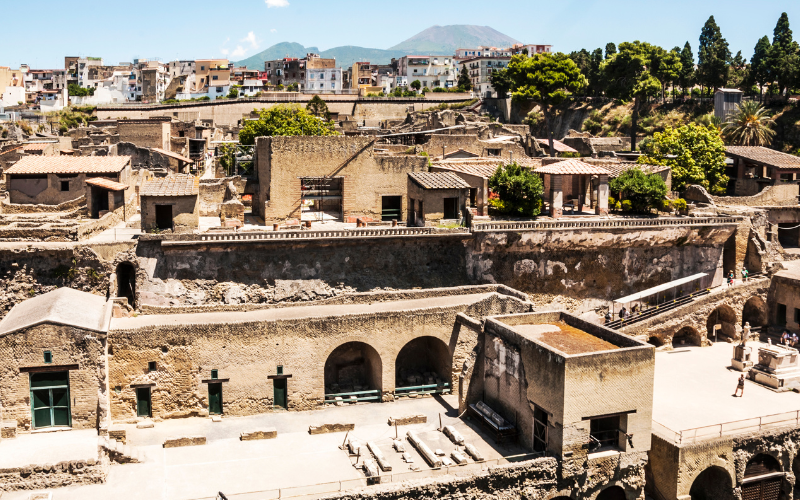Nestled in the heart of Italy’s Campania region, Herculaneum is a treasure trove of archaeological marvels that any history buff or curious wanderer must experience. Often overshadowed by its vastly popular neighbor, Pompeii, Herculaneum remains a hidden gem that rewards those who choose to explore its ruins. From its well-preserved, ancient structures to its stunning views of the Mediterranean sea, Herculaneum is a destination that showcases the ingenuity and resilience of a long lost civilization.
- The History – What makes Herculaneum unique is that it offers a glimpse of what life was like in a wealthy Roman city before Mount Vesuvius erupted in 79 AD. Unlike Pompeii, Herculaneum was primarily inhabited by rich merchants and aristocrats who built lavish villas around the city. These structures were built with diverse materials such as marble and precious stones, highlighting their artistic and architectural mastery. Through careful excavation and extensive preservation efforts, Herculaneum has now become one of the most well-preserved ancient cities in the world, providing valuable insights into the social, cultural, and economic aspects of life in imperial Rome.
- The Artifacts – The rich history of Herculaneum is intertwined with the discoveries of countless artifacts that reflect the Romans’ daily life and profession. The archaeological site contains numerous frescoes, mosaics, statues, and household items that give a detailed representation of life in the ancient city. Notable artifacts include The Villa dei Papiri, one of the few surviving libraries from ancient Rome, and a remarkable collection of carbonized papyri – the oldest surviving Latin literature in the world. Visitors can also observe a range of Roman cooking and medicinal tools, jewelry, and ornate furniture, making the trip to Herculaneum a vivid voyage through the past.
- The Accessibility – Herculaneum is only a short train ride from Naples, making it a great day trip for tourists staying in the area. The site is smaller than Pompeii, and visitors can cover the entire area without feeling rushed, which requires more than a day. Unlike Pompeii, which can get crowded, especially during the busy season, Herculaneum remains fairly quiet, making it easier to fully appreciate the serenity of the ancient ruins.
- The Scenery – The location of Herculaneum is unparalleled. Perched on the coastline of the Tyrrhenian Sea, the site offers visitors stunning views of the bay of Naples and the surrounding towns. A leisurely stroll through the ruins provides ample opportunity to appreciate the beauty of Italy’s natural landscape. Numerous shaded paths lead through terraces of fragrant lemon groves, and a café nestled in the gardens of the ancient villa provide refreshments amid the ruins.
- The Authenticity – Herculaneum, while more compact than Pompeii, is a genuine glimpse into the daily life of the residents who burrowed there. Pompeii had to be reconstructed, and although still impressive, it is deliberately recreated to showcase the history of the site, and in a way, it loses its authenticity in the process. Herculaneum, however, is a raw, unfiltered, and intact ancient city that gives visitors an accurate notion of the lives of the Romans who inhabited them.
Conclusion:
Herculaneum is a hidden gem that deserves all the attention it receives. It is a place of immense beauty and rich history that is accessible, authentic, and most importantly, mind-blowing. For those seeking a timeless experience, a visit here is essential, and it will undoubtedly leave its visitors with a sense of awe and a deep appreciation for the past civilizations.


